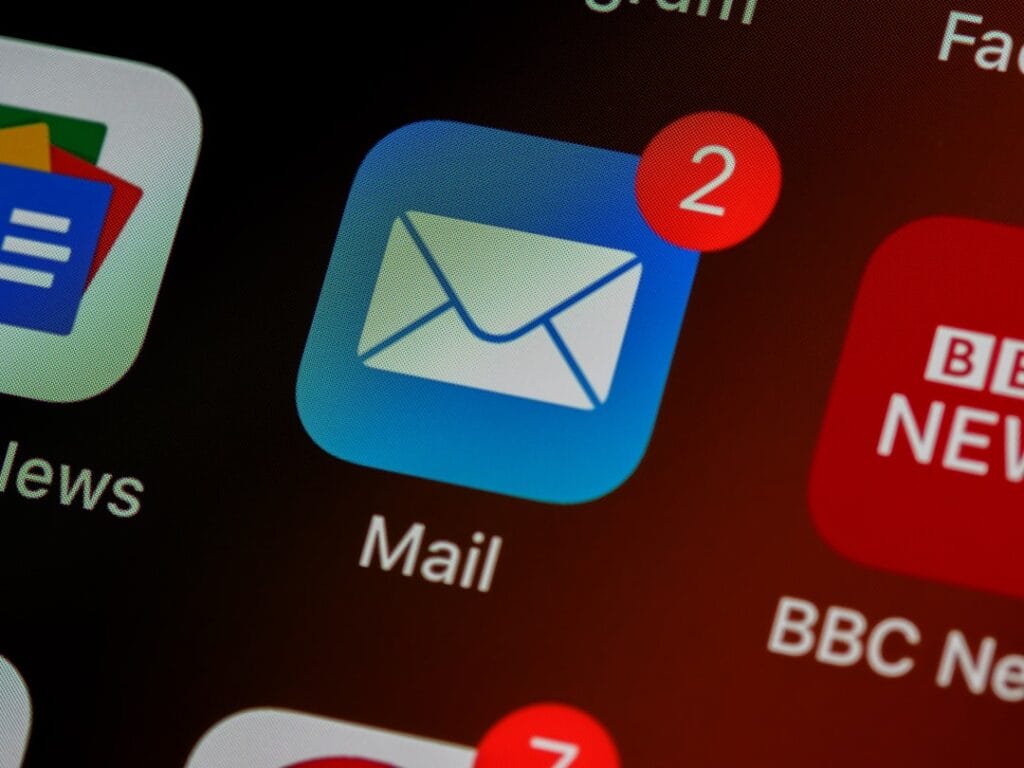La génération de leads est un processus stratégique visant à identifier et attirer des prospects potentiels pour une entreprise. Ce processus consiste à créer de l’intérêt pour les produits ou services offerts, dans le but de développer un pipeline de ventes robuste. Les leads peuvent être des individus ou des organisations qui ont démontré un intérêt pour l’offre de l’entreprise, généralement en interagissant avec du contenu marketing ou en fournissant leurs coordonnées.
Dans le contexte B2B (Business-to-Business), la Génération de leads se concentre spécifiquement sur l’acquisition de prospects pour les entreprises vendant à d’autres entreprises. Ce type de génération de leads présente des caractéristiques distinctes :
1. Cycles de vente plus longs : Les décisions d’achat en B2B impliquent souvent plusieurs parties prenantes et peuvent s’étendre sur plusieurs mois.
2. Processus décisionnels complexes : Les achats B2B nécessitent généralement une analyse approfondie et l’approbation de multiples niveaux hiérarchiques. 3.
Valeur des transactions plus élevée : Les ventes B2B impliquent souvent des montants plus importants, justifiant un investissement plus conséquent dans l’acquisition de chaque lead. 4. Ciblage précis : Les campagnes de génération de leads B2B doivent être hautement ciblées pour atteindre les décideurs appropriés au sein des entreprises visées.
5. Contenu spécialisé : Le marketing de contenu en B2B nécessite souvent des informations techniques détaillées et une expertise sectorielle approfondie. La génération de leads, qu’elle soit B2B ou B2C, est cruciale pour la croissance et la pérennité des entreprises, car elle alimente directement le processus de vente et contribue à l’expansion de la base clientèle.
Résumé
- La génération de leads désigne le processus de création et de gestion de prospects intéressés par les produits ou services d’une entreprise.
- Les stratégies pour générer des leads B2B incluent le marketing de contenu, le référencement, le marketing par e-mail, les réseaux sociaux et le marketing d’influence.
- La qualification des leads est essentielle pour identifier les prospects les plus susceptibles de devenir des clients, ce qui permet d’optimiser les efforts de vente et de marketing.
- Les outils indispensables pour générer des leads efficacement comprennent les CRM, les outils d’automatisation du marketing, les formulaires de capture de leads, les chatbots et les outils d’analyse.
- Convertir les prospects en clients implique de créer des offres attrayantes, de personnaliser les communications, de suivre les prospects de manière proactive et de fournir un excellent service client.
Les différentes stratégies pour générer des leads B2B
Il existe plusieurs stratégies efficaces pour générer des leads B2Tout d’abord, le marketing de contenu est une approche clé pour attirer l’attention des prospects potentiels. En créant et en partageant du contenu pertinent et informatif, les entreprises peuvent établir leur expertise et attirer un public qualifié. Cela peut se faire à travers des blogs, des livres blancs, des études de cas, des webinaires, etc.
Une autre stratégie importante est l’optimisation pour les moteurs de recherche (SEO). En améliorant la visibilité de votre site web dans les résultats de recherche, vous augmentez les chances d’attirer des prospects qualifiés. Cela implique l’optimisation du contenu, la création de liens et l’amélioration de la structure du site.
Le marketing par e-mail est également un outil puissant pour la génération de leads B2En envoyant des e-mails ciblés et personnalisés à des prospects potentiels, les entreprises peuvent établir des relations et encourager l’engagement. Enfin, la participation à des événements et salons professionnels peut également être une stratégie efficace pour rencontrer des prospects qualifiés en personne et établir des relations commerciales.
Générer des leads qualifiés : l’importance de la qualification des leads

La qualification des leads est un aspect crucial de la génération de leads B2Il ne suffit pas d’attirer un grand nombre de prospects, il est essentiel de s’assurer qu’ils correspondent aux critères définis pour être considérés comme des leads qualifiés. La qualification des leads implique de déterminer si un prospect a un réel intérêt pour vos produits ou services, s’il a le pouvoir d’achat nécessaire et s’il correspond à votre client idéal. La qualification des leads peut se faire à travers diverses méthodes, telles que la notation des leads en fonction de leur engagement avec votre entreprise, la collecte d’informations sur leurs besoins et leurs défis, ou encore la vérification de leur adéquation avec votre offre.
En qualifiant efficacement vos leads, vous pouvez concentrer vos efforts sur les prospects les plus susceptibles de se convertir en clients, ce qui permet d’optimiser votre temps et vos ressources.
Les outils indispensables pour générer des leads efficacement
| Outil | Description | Avantages |
|---|---|---|
| CRM (Customer Relationship Management) | Plateforme de gestion de la relation client | Centralise les informations clients, facilite le suivi et la personnalisation des interactions |
| Marketing automation | Outil automatisé pour le marketing | Permet de cibler et de nourrir les prospects de manière personnalisée et efficace |
| Formulaires de capture | Formulaire en ligne pour collecter les informations des prospects | Facilite la collecte de données et la qualification des leads |
| Analyseur de trafic web | Outil pour mesurer et analyser le trafic sur le site web | Permet de comprendre le comportement des visiteurs et d’optimiser les actions de génération de leads |
Pour générer des leads efficacement, il est essentiel d’utiliser les bons outils. Tout d’abord, les systèmes de gestion de la relation client (CRM) sont indispensables pour suivre et gérer les interactions avec les prospects tout au long du processus de vente. Les CRM permettent de centraliser les informations sur les prospects, de suivre les activités et les communications, et d’analyser les performances.
Les plateformes d’automatisation du marketing sont également essentielles pour optimiser le processus de génération de leads. Elles permettent d’automatiser les campagnes marketing, d’envoyer des e-mails personnalisés, de suivre le comportement des prospects sur le site web, et d’analyser les résultats pour améliorer les performances. En outre, les outils d’analyse web sont précieux pour comprendre le comportement des visiteurs sur votre site web et identifier les opportunités de génération de leads.
Ils fournissent des données sur le trafic, les conversions, les sources de trafic, et permettent d’optimiser l’expérience utilisateur pour attirer davantage de prospects qualifiés. Enfin, les outils de gestion des réseaux sociaux sont importants pour engager et interagir avec les prospects sur les plateformes sociales, ainsi que pour surveiller les conversations et identifier les opportunités de génération de leads.
Générer des leads signification : comment convertir les prospects en clients
Générer des leads est une étape cruciale, mais la conversion de ces prospects en clients est tout aussi importante. Pour convertir efficacement les prospects en clients, il est essentiel d’établir une relation solide avec eux et de répondre à leurs besoins spécifiques. Cela peut se faire à travers une communication personnalisée, en offrant des solutions adaptées à leurs défis et en démontrant la valeur ajoutée de vos produits ou services.
La mise en place d’un processus de nurturing est essentielle pour entretenir la relation avec les prospects et les guider tout au long du parcours d’achat. Cela implique l’envoi régulier de contenus pertinents et informatifs, la proposition d’offres spéciales ou personnalisées, ainsi que le suivi proactif pour répondre à leurs questions et préoccupations. En outre, il est important d’établir la confiance avec les prospects en leur fournissant des témoignages clients, des études de cas ou des démonstrations produits qui démontrent la valeur et l’efficacité de vos offres.
Enfin, il est crucial d’avoir un processus clair et efficace pour conclure la vente, que ce soit à travers un appel téléphonique, une démonstration en personne ou une proposition commerciale convaincante.
Les étapes clés pour mettre en place une stratégie de génération de leads réussie

Pour mettre en place une stratégie de génération de leads réussie, il est important de suivre plusieurs étapes clés. Tout d’abord, il est essentiel de définir clairement vos objectifs en termes de génération de leads, en identifiant le type de prospects que vous souhaitez attirer et convertir en clients. Ensuite, il est important d’identifier votre public cible et ses besoins spécifiques afin d’adapter votre stratégie de génération de leads en conséquence.
Cela implique la création de personas ou profils types représentatifs de vos clients idéaux. Une fois que vous avez défini vos objectifs et identifié votre public cible, vous pouvez mettre en place les différentes tactiques et canaux pour attirer et convertir des leads qualifiés. Cela peut inclure la création de contenu pertinent, l’optimisation du référencement naturel, l’utilisation du marketing par e-mail, la participation à des événements professionnels, etc.
Enfin, il est crucial d’évaluer régulièrement les performances de votre stratégie de génération de leads à travers l’analyse des données et l’ajustement continu de vos tactiques en fonction des résultats obtenus.
Les bonnes pratiques pour booster vos ventes grâce au lead marketing
Pour booster vos ventes grâce au lead marketing, il est important d’adopter certaines bonnes pratiques. Tout d’abord, il est essentiel d’établir une collaboration étroite entre les équipes marketing et ventes afin d’aligner leurs objectifs et leurs actions pour générer et convertir des leads qualifiés. Ensuite, il est important d’adopter une approche centrée sur le client en offrant une expérience personnalisée tout au long du parcours d’achat.
Cela implique une communication adaptée aux besoins spécifiques des prospects et une réponse rapide à leurs demandes. En outre, il est crucial d’investir dans la formation et le développement des compétences des équipes marketing et ventes pour optimiser leurs performances dans la génération et la conversion de leads. Enfin, il est important d’établir un suivi régulier des résultats obtenus à travers des indicateurs clés de performance (KPI) pour identifier les opportunités d’amélioration et ajuster votre stratégie en conséquence.
En conclusion, la génération de leads B2B est un élément essentiel du processus commercial qui nécessite une approche stratégique et bien pensée pour attirer, qualifier et convertir efficacement des prospects en clients. En adoptant les bonnes pratiques et en utilisant les outils appropriés, les entreprises peuvent optimiser leur processus de génération de leads et booster leurs ventes grâce au lead marketing.
Pour en savoir plus sur la prospection B2B et la conformité RGPD et ePrivacy, consultez l’article de Magileads intitulé « Conformité RGPD et ePrivacy : comment prospecter en B2B ? » ici. Cet article offre des conseils pratiques pour mener des campagnes de prospection tout en respectant les réglementations en vigueur.
FAQs
Qu’est-ce que le marketing des leads?
Le marketing des leads est une stratégie qui vise à générer des prospects qualifiés pour une entreprise. Il s’agit de susciter l’intérêt des clients potentiels et de les inciter à fournir leurs coordonnées afin de pouvoir être contactés ultérieurement.
Quels sont les avantages du marketing des leads?
Le marketing des leads permet de cibler des prospects qualifiés, ce qui augmente les chances de conversion en clients. Il permet également de personnaliser les messages et de suivre le parcours des prospects, ce qui améliore l’efficacité des campagnes marketing.
Quelles sont les différentes techniques de génération de leads?
Les techniques de génération de leads incluent le marketing de contenu, les campagnes d’emailing, les publicités ciblées, le référencement naturel (SEO), les réseaux sociaux, les webinaires, les salons professionnels, etc.
Comment mesurer l’efficacité du marketing des leads?
L’efficacité du marketing des leads peut être mesurée à l’aide de différents indicateurs tels que le taux de conversion, le coût par lead, le taux d’ouverture des emails, le taux de clics, etc. Ces données permettent d’évaluer la performance des campagnes et d’apporter des ajustements si nécessaire.
Quelles sont les bonnes pratiques pour réussir une campagne de marketing des leads?
Pour réussir une campagne de marketing des leads, il est essentiel de bien définir sa cible, de proposer un contenu pertinent et attractif, d’optimiser les formulaires de capture, de suivre et de qualifier les leads, et de mettre en place un processus de nurturing pour entretenir la relation avec les prospects.





